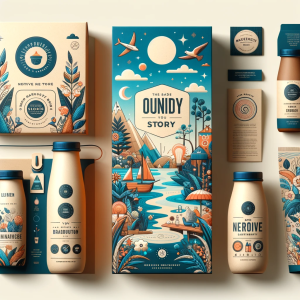Introduction
In today’s world, sustainability is not just a buzzword; it’s a mandate. As we confront the realities of climate change and environmental degradation, every industry is called upon to re-evaluate its practices and seek more earth-friendly alternatives. Amidst all this, the cosmetics industry holds a particular spotlight. Packaging, an often overlooked aspect, plays a pivotal role in the beauty sector’s environmental footprint.
Cosmetic products, synonymous with allure and luxury, have traditionally been housed in packaging that mirrors these attributes – often at the expense of the environment. But as the tides of consumer awareness rise, the need for sustainable cosmetic packaging has never been more pronounced.
At Sam’s Packaging, our journey has been one of innovation and commitment. We’ve honed our expertise in merging the worlds of beauty and eco-responsibility, ensuring that luxury doesn’t come at the planet’s expense. As we delve deeper into the realm of sustainable cosmetic packaging, it’s evident that the future of beauty is not just about looking good but feeling good about our choices too.
1. Why Sustainable Cosmetic Packaging Stands Out
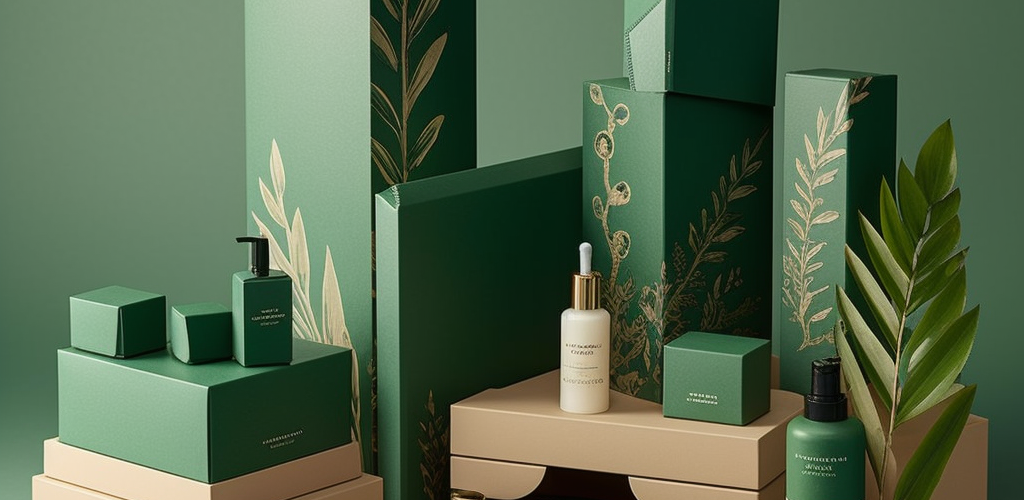
Packaging is the first touchpoint between a product and its potential user, and nowhere is this truer than in the cosmetics industry. The world of beauty places a high premium on presentation, making the packaging an integral part of the product experience. It’s not merely a container; it’s a statement of brand ethos, product quality, and, increasingly, ecological responsibility.
Aesthetics Meets Functionality
Cosmetic packaging has always strived for a delicate balance between functionality and aesthetics. Unlike many other products where packaging can be straightforward and utilitarian, cosmetics demand innovation. From lipstick tubes to foundation bottles, each container must be crafted to provide ease of use while also exuding a sense of luxury and allure.
Distinctive Challenges
Beyond aesthetics, cosmetic packaging presents unique challenges. It must protect often delicate formulations from contamination and degradation, all while being user-friendly. Creams, serums, powders, gels – each product type has its specific packaging requirements. This intricacy and specialization make the shift to sustainable options both a challenge and an opportunity.
Standing Apart in a Crowded Market
With an increasing number of brands vying for consumer attention, sustainable packaging provides a means to stand out. It’s not just about being eco-friendly; it’s about showcasing brand values, meeting consumer expectations, and future-proofing in a rapidly changing marketplace.
In the quest for sustainability, the cosmetics industry faces both unique challenges and opportunities. The sector, distinct from many others, demands a nuanced approach. While the shift isn’t without its hurdles, the rewards – both for brands and the planet – are substantial.
2. Material Innovations in Cosmetic Packaging
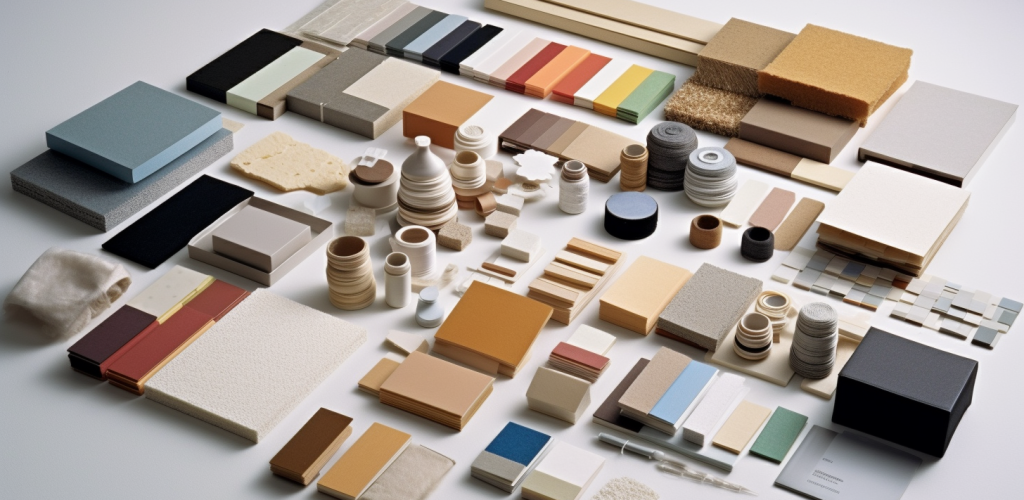
The cosmetics industry is continually evolving, and with sustainability at the forefront of modern concerns, innovative materials have emerged as game-changers. These materials not only lessen the environmental footprint but also offer brands a chance to distinguish themselves in a saturated market.
Bioplastics
Derived from renewable biomass sources, such as corn starch or sugarcane, bioplastics are becoming a sought-after alternative to conventional plastics.
Benefits: Bioplastics can significantly reduce carbon emissions during production, are often compostable, and reduce our dependence on fossil fuels.
Challenges: While they present a more sustainable option, not all bioplastics break down easily in natural environments. Their biodegradability often requires specific industrial composting conditions to fully degrade.
Glass Alternatives
While glass has always been seen as a premium, eco-friendly material due to its recyclability, alternatives like recycled glass or glass-like plastics are on the rise.
Benefits: Recycled glass reduces the need for raw materials, conserving energy. Glass-like plastics offer the luxe feel of glass but are lighter, making transportation more energy-efficient.
Challenges: Glass is heavier than plastic, leading to increased emissions from transportation. Also, while glass-like plastics may be more efficient in some aspects, they may not be as recyclable as traditional plastics or glass.
Aluminum and Metal Packaging
Traditionally used for products like lip balms, aluminum offers a sleek look and high recyclability.
Benefits: Aluminum is lightweight and can be recycled indefinitely without degrading in quality. It also provides an excellent barrier against light, oxygen, and contaminants, ensuring product integrity.
Challenges: Mining bauxite, the primary source of aluminum, has environmental consequences. It’s crucial to prioritize recycled aluminum to mitigate this impact.
Paper and Cardboard
Brands are increasingly exploring paper and cardboard options, especially for secondary packaging.
Benefits: When sourced responsibly, these materials can be biodegradable, compostable, and recyclable. They also offer a unique tactile experience for the consumer.
Challenges: Paper-based solutions might not provide the same protective qualities as plastics, especially against moisture. There’s also the concern of ensuring the paper is sourced sustainably.
Incorporating sustainable materials into cosmetic packaging isn’t just a passing trend; it’s a necessary evolution. While each material has its pros and cons, the key lies in selecting the right fit for the product, brand ethos, and environmental goals. As we continue to innovate at Sam’s Packaging, we prioritize materials that harmoniously blend functionality, aesthetics, and sustainability.
3. Reducing the Cosmetic Footprint: Design Considerations
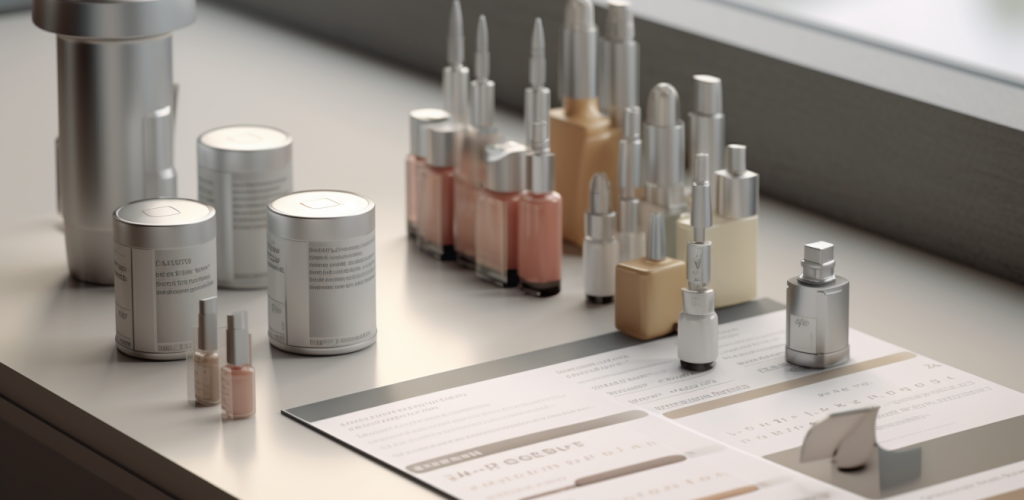
The cosmetics industry, with its frequent launches and seasonal collections, has often been associated with excess packaging. However, as brands recognize the environmental ramifications, they’re exploring design solutions to reduce their footprint. Sustainable designs aren’t just eco-friendly; they resonate with a growing segment of conscious consumers. Here are some of the forefront design philosophies shaping the future of cosmetic packaging.
Minimalistic Designs
Gone are the days when excessive layers of packaging symbolized luxury. The modern consumer equates luxury with responsibility, paving the way for minimalist designs.
Benefits: By using less material, brands can cut down on waste, reduce costs, and present a clean, chic aesthetic that appeals to many consumers.
Challenges: Brands need to ensure that while designs are streamlined, product protection and information transparency aren’t compromised.
Refillable and Multi-use Packaging Concepts
This isn’t a new idea, but its adoption is growing rapidly. Brands are designing containers that can be refilled, extending the life of the primary packaging.
Benefits: Consumers can purchase refills, typically at a reduced price, leading to less packaging waste and fostering brand loyalty. It’s also an opportunity for brands to introduce subscription models.
Challenges: Ensuring the durability of primary packaging and creating a seamless process for consumers to obtain refills.
Modular Designs
These designs allow parts of the packaging to be replaced, meaning if a component of the packaging breaks or runs out, it can be swapped without discarding the entire unit.
Benefits: This design philosophy extends the lifecycle of the packaging, reduces waste, and offers customization opportunities for consumers. For instance, a modular lipstick might allow users to switch out colors while retaining the same case.
Challenges: Brands need to ensure that modular components are easily available and that consumers are educated on how to swap out parts without difficulty.
As we venture deeper into sustainable practices at Sam’s Packaging, our focus remains on creating packaging that’s not just environmentally considerate but also enhances the user experience. Recognizing that design plays a pivotal role, we continually explore innovative approaches that cater to both the planet and the consumer.
4. Benefits to Brands and Consumers
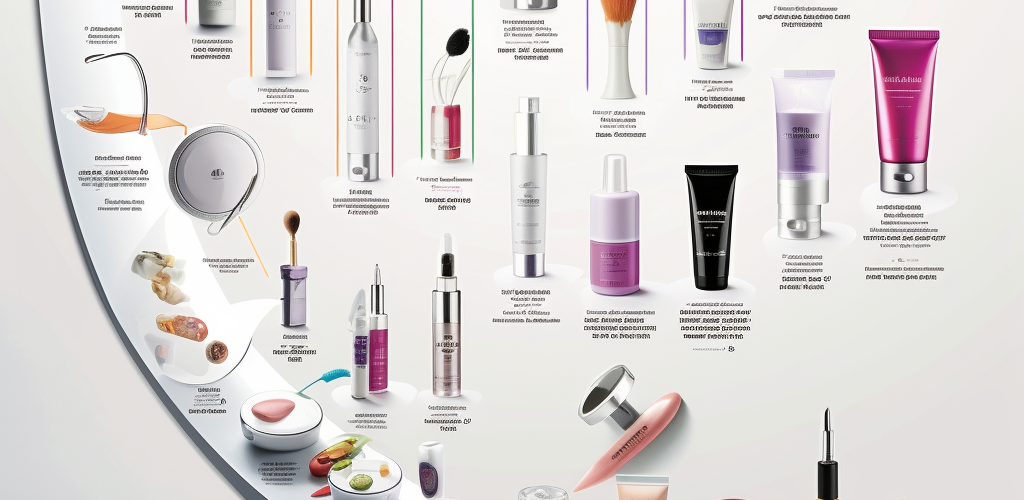
In the current era, sustainability isn’t just a buzzword; it’s a commitment that resonates deeply with brands and consumers alike. Embracing sustainable cosmetic packaging goes beyond environmental responsibility—it’s a powerful strategy that can elevate a brand’s image, cater to consumer demands, and ultimately, boost the bottom line. Here’s a closer look at the manifold benefits.
Building Brand Loyalty
When a brand takes steps to reduce its environmental impact, it signals to consumers that it cares about more than just profits. This fosters trust and encourages loyalty among consumers who want to support businesses making a positive impact.
Advantage: Customers are more likely to return and even pay a premium for brands aligned with their values.
Challenge: Brands need to ensure that their sustainability claims are authentic to avoid accusations of greenwashing.
Catering to the Eco-Conscious Consumer Base
Today’s consumers are more informed and discerning. Many prioritize sustainability, actively seeking out brands that echo their environmental concerns.
Advantage: Brands with sustainable packaging can tap into a growing market segment and differentiate themselves from competitors.
Challenge: Staying updated with evolving sustainability standards and consumer expectations.
Enhanced Market Presence and Brand Image
Sustainable packaging, especially when combined with effective marketing, can significantly enhance brand visibility. Eco-initiatives often garner media attention, positive word-of-mouth, and can be instrumental in viral marketing campaigns.
Advantage: Positive brand recognition and a potential increase in market share.
Challenge: Continuously innovating and improving upon sustainable practices to maintain a leading edge.
5. Pioneers: Cosmetic Brands Leading in Sustainable Packaging
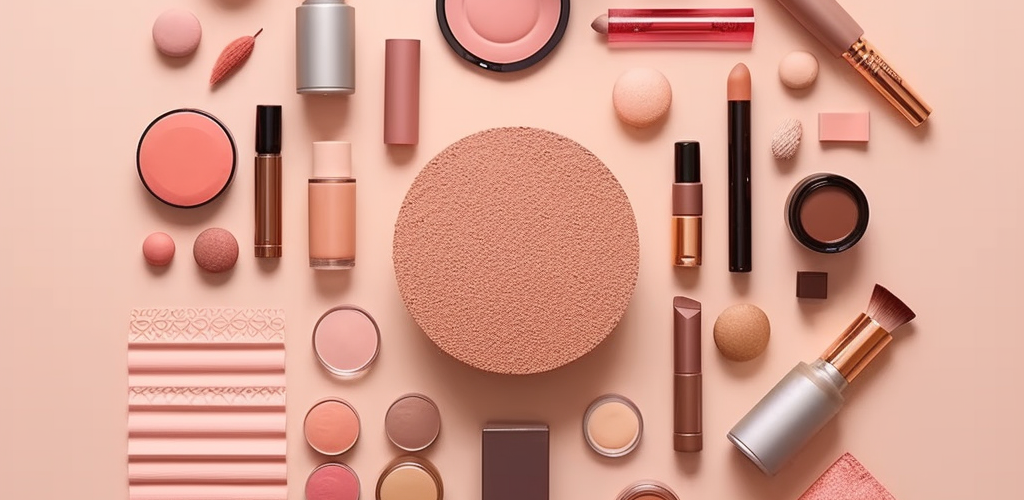
The cosmetics industry, historically known for its luxurious and often excessive packaging, is witnessing a paradigm shift. Several brands are not just adopting but leading the sustainable packaging movement, proving that beauty and eco-consciousness can go hand in hand. Here’s a spotlight on a few of these trailblazers:
- Initiative: Lush has been a pioneer in reducing packaging with their famous ‘naked’ products, eliminating the need for containers entirely for many of their items.
- Impact: Their commitment to sustainability has fostered immense brand loyalty, with consumers appreciating the company’s ethos and principles.
- Initiative: Aveda is known for its post-consumer recycled packaging. They aim to use materials that are recyclable or sourced from renewable origins.
- Impact: This approach not only aligns with their natural ingredient philosophy but has also positioned Aveda as a leader in sustainable beauty.
- Initiative: Elate opts for bamboo packaging, a rapidly renewable resource. They also have refillable palettes, significantly reducing single-use packaging.
- Impact: Their sustainable practices combined with high-quality products have created a niche but growing market of devoted followers.
- Initiative: RMS Beauty utilizes minimalistic packaging made of recyclable glass with metal lids, avoiding plastic where possible.
- Impact: This positions the brand as both luxury and environmentally conscious, catering to a discerning market segment that values both.
For these brands, sustainable packaging isn’t merely a marketing strategy but a genuine commitment to a more responsible beauty industry. They’ve witnessed firsthand the power of aligning brand values with consumer demand for more sustainable products. The results? Enhanced brand reputation, consumer trust, and in many cases, increased sales.
Brands like these set an example, proving that with innovation and commitment, it’s entirely possible to marry aesthetics, product protection, and sustainability in the cosmetics world. Their journeys offer invaluable insights for others in the industry and serve as an inspiration for businesses on the fence about making the sustainable shift.
6. The Aesthetics of Sustainability
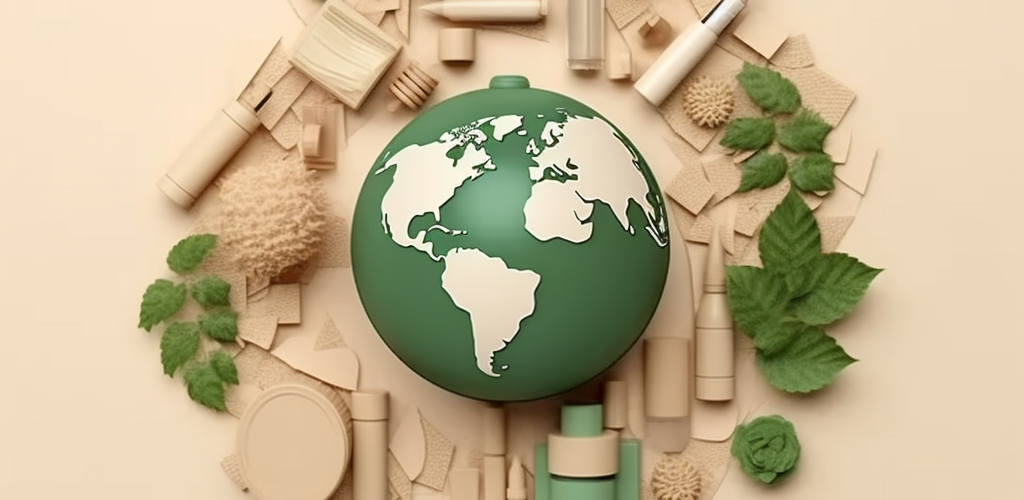
The cosmetics industry, at its core, is intertwined with beauty, aesthetics, and luxury. While introducing sustainability into this mix, there’s a challenge to ensure that eco-friendly packaging doesn’t compromise the opulence traditionally associated with cosmetic products. This is the art of blending sustainability with aesthetics, ensuring that the packaging is both environmentally conscious and appealing to the discerning consumer.
Luxury in Simplicity
One of the primary tenets of sustainable packaging is minimalism. By reducing excessive elements, not only can waste be curtailed, but there’s also a unique luxury in clean, simple designs. These unembellished forms speak of sophistication and let the product shine.
Natural Elegance
Eco-friendly materials often exude an inherent elegance. Think bamboo casings, glass containers, or craft paper wraps. Each has a texture, weight, and feel that can be uniquely luxurious in its own right. With the right design approach, these materials can be as lavish as any traditionally opulent packaging.
Branding with a Conscience
Incorporating brand identity into sustainable designs isn’t just about logos or color schemes. It’s about capturing the essence of the brand’s commitment to the environment. Brands can integrate their sustainability story, making the packaging a tactile representation of their eco-journey. For instance, using embossed logos instead of plastic labels or integrating QR codes that lead to a brand’s sustainability mission can amplify the message further.
Innovation in Design
Brands are increasingly turning to innovative designs to ensure their sustainable packaging is as eye-catching as it is eco-friendly. Techniques like laser etching, using vegetable inks, or creating origami-inspired foldable designs can make a product stand out on the shelf.
In essence, while the challenge is real, so are the solutions. With creativity, commitment, and a deep understanding of both sustainability and consumer desires, brands can craft packaging that’s both eco-responsible and irresistibly attractive.
7. Navigating Challenges in Sustainable Cosmetic Packaging
The beauty industry’s embrace of sustainable packaging is undeniably essential. However, the path to sustainability isn’t without its challenges. From ensuring that the aesthetics aren’t compromised to managing costs, brands have a few obstacles to overcome.
Myths about Durability and Quality
One common misconception is that sustainable materials are inherently less durable or premium in quality. But with advancements in technology and materials science, eco-friendly packaging solutions today can rival, if not surpass, their non-sustainable counterparts in terms of robustness and luxury. Educating both the industry and consumers about these advancements is vital.
Balancing Costs
While there might be a higher initial investment required for sustainable packaging options, it’s essential to look at the bigger picture. First, the long-term benefits often include cost savings due to the efficient use of materials and reduced waste. Moreover, brands can gain a competitive edge in a market where consumers are willing to pay a premium for eco-friendly products. This shift in consumer behavior can translate to increased sales and brand loyalty, offsetting initial expenses.
Transparent and Ethical Supply Chains
A sustainable package is only as eco-friendly as its supply chain. Brands need to ensure that the materials they source, from bioplastics to bamboo, are cultivated and processed responsibly. This might mean delving deep into supply chains, auditing suppliers, and seeking certifications that validate sustainability claims.
Communication is Key
It’s not enough to just adopt sustainable packaging; brands need to effectively communicate their efforts to consumers. Clear labeling, transparency about sourcing, and educating consumers about the recyclability or biodegradability of the packaging can turn potential challenges into opportunities for brand enhancement.
Conclusion
The cosmetics industry, known for its glitz and glamour, is undergoing a profound transformation. Sustainability, once a mere buzzword, has now taken center stage, dictating the way brands think about product presentation, protection, and the planet. The rise of sustainable cosmetic packaging isn’t just a trend; it’s an evolution, a response to the pressing needs of our environment and the increasing demands of informed consumers.
Navigating this evolving landscape requires a deep understanding, and at Sam’s Packaging, we’ve cultivated just that. As specialists in this domain, we’re ready to guide brands into the future of beauty, where luxury meets responsibility.
Are you looking to elevate your brand with sustainable cosmetic packaging? Join hands with the experts. Reach out to us and let’s shape a greener, more responsible, and alluring future for your beauty products together.


